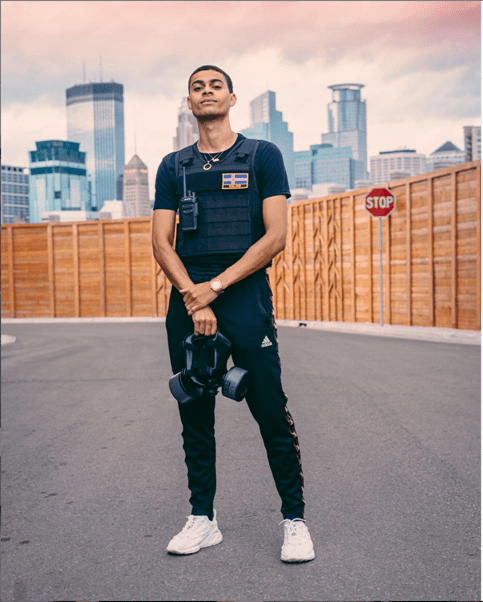'Like Uber Eats for therapy': South Mpls. man helps connect community to mental health care
Go Deeper.
Create an account or log in to save stories.
Like this?
Thanks for liking this story! We have added it to a list of your favorite stories.
This is part of a monthlong series looking at how the community has transformed the site of George Floyd’s killing — 38th Street and Chicago Avenue in Minneapolis — and at the people behind its transformation. It is the culmination of reporting over several months, and a partnership with South High School to engage neighborhood youth in telling their community’s story.

Isak Douah, 22, grew up in the Longfellow neighborhood of Minneapolis and graduated from South High School in 2016. He went on to go to the University of Amsterdam to study fashion design. Prior to leaving for college, he spent a lot of time doing work as a youth organizer.
“It was just something that I feel like came kind of naturally,” Douah said about helping to organize his first protest, a school walkout following the 2014 fatal police shooting of Michael Brown in Ferguson, Mo. “Mike Brown could have been me, or my cousins, or my dad, so I remember feeling very emotional about it.”
Douah was in Amsterdam when he got the news that Minneapolis police had killed George Floyd near the neighborhood where he grew up. He said Amsterdam was on lockdown to curb the spread of coronavirus, but he felt compelled to fly home anyway.
Turn Up Your Support
MPR News helps you turn down the noise and build shared understanding. Turn up your support for this public resource and keep trusted journalism accessible to all.
“What really motivated me to come back was, in those nights when everything was burning, imagine I’m watching all of this stuff on Instagram Live videos,” Douah said. “All the homies that I used to protest with, used to kick it with, are filming just the most felonious activities, and I’m like, oh my days.”
In the days following Floyd’s death, peaceful demonstrations during the day gave way to looting and arson at night. Dozens of buildings burned, including the Minneapolis Police Department’s Third Precinct, where the officers who detained Floyd worked.
Once Douah was back in Minneapolis, he found his place by protecting the memorial and protest zone at the intersection where Floyd died, which the community now calls George Floyd’s Square. He worked as both a security member and first responder.
Things really started to get serious for him when he witnessed the fatal shooting of a community member and friend, Dameon Chambers, at the square on Juneteenth. The shooting occurred while the square was busy, and several women were present.
So he began crowdfunding to raise money to help Black women pay for gun permits so they could protect themselves.
Douah also worked with his dad to develop a program that helps connect people in his community with mental health care.
“I want the community to have the means to protect themselves by any means necessary, and I also want them to have the means to protect their minds,” he said.
Douah described the app as “Uber Eats for therapy.” Users can book a Black therapist to come to them.
“Instead of busing way out to the suburbs to sit on some couch, the way our application would work is these therapists would pull up on you, wherever you’re at,” he said. “I think there’s a place in mental health for everybody.”
Douah is now back in Amsterdam, but continues to be involved in his Minneapolis community.
Hamda Abdi, Helene Francis, Atticus Keezer-Dow and Olivia Sather are students at South High School in Minneapolis. Their class, "voices" teaches the fundamentals of journalism and worked with MPR News on a project about George Floyd’s Square.


